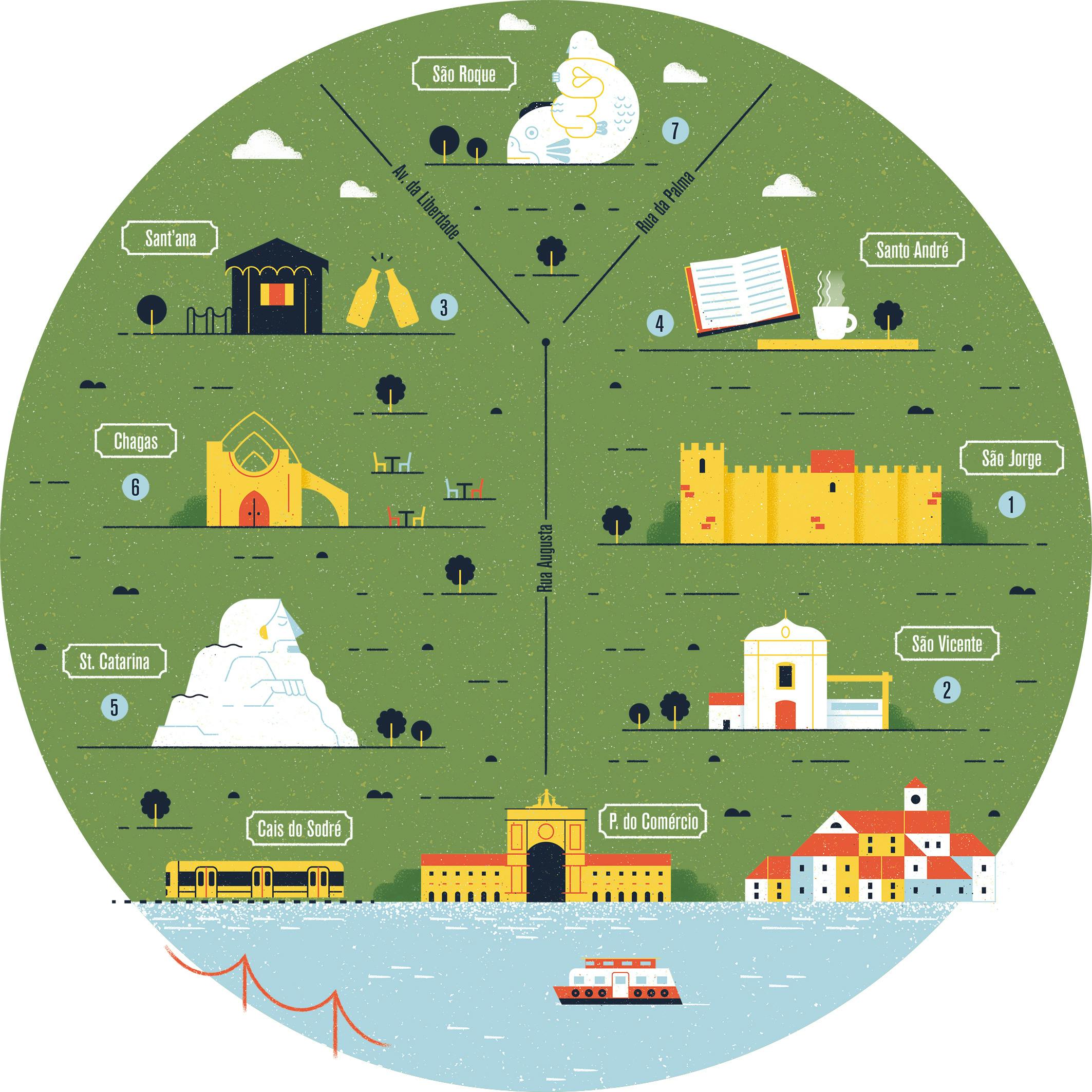The Seven Hills
Seven is a curious number. Seven deadly sins, seven wonders of the ancient world. Legend has it that the great Greek hero Odysseus founded the city based upon the seven hills, mirroring the seven hills of Rome. He got such pleasure exploring the land that he established the city by using Lisbon’s hills as a landmark.

Text: Kaitlyn Bové
Illustration: Inês Costa for Minimaps.com
The hills, celebrated by many and feared by others, are inextricably tied in with the cycling culture in Lisbon. Urban cycling culture can be facilitated by the level of easiness for outsiders, and therefore is welcoming to newcomers and easier to grow the community. It’s a question of accessibility. Bike culture in Lisbon started around the 1980s with BTT bikes (mountain bikes). People wanted to go up and down the hills for fun. It was a game that celebrated the city’s geography, a tradition that is still admired by some who participate in organized races up and down the hills.
But for outsiders, they are intimidating to those who aren’t used to the steep urban terrain and cobble stone roads. We couldn’t get away from the topic of the hills; all Lisbon riders have their own opinions. On the other hand, the hills are only concentrated in Lisbon’s center. The city is flat in the neighborhoods that are tucked behind the city center (the center having the most historic and ancient parts of town). As for the city center, regulars have found their own routes to maneuver around the hills in the heart of the city.
1. São Jorge
Crowned at the top of Lisbon’s most easily recognizable hill is the stone castle, appearing as if was carved out by nature. Being the most emblematic of the seven hills, it also happens to be the tallest. The south slope walls the Tagus, and at the foothills is the architecturally mixedstyle Lisbon Cathedral (Sé de Lisboa), the largest and oldest church in the city that has survived the earthquakes over the centuries.
2. São Vicente
The first mount on the eastern most part of Lisbon. The hill hosts the Pantheon, the marble white dome contributing to Lisbon’s coastline. It’s also home of two of the oldest and most historic neighborhoods, Alfama and São Vicente, both of which steep sharply down to Santa Apolónia next to the Tagus River. Two days a week the hill also welcomes the Market da Ladra (market of thieves).
3. Sant’ana
Also known as the Hill of Saúde (health), it’s surrounded by two very long valleys, one on its east and the other on its west. It’s a host to the Faculty of Medical Sciences and the most central of all of the hills.
4. Santo André
This hill has two mounts varying in height. You’ll find them near Graça, one of the highest lookout points in Lisbon. (You might want to walk this one). The first king took advantage of its strategic position and placed his troops there during the Christian Reconquest. It’s history also includes housing Lisbon’s formal nobles.
5. St. Catarina
Spreading from Bica, a steep neighborhood complimented by an elevator train, to the western part off Lisbon bordering the suburbs. It’s almost un noticeable to the cyclist on the coast, heading west from Cais do Sodré. On it’s highest spot is a lookout point, facing the Tagus River.
6. Chagas
Not far from this hill is the valley, Vale das Chagas. The landslide in 1597 created the valley and thereby the separation between Chagas and Santa Catarina (the 7th hill).
7. São Roque
Home of the bohemian Bairro Alto, a formerly traditional neighborhood which is now more recently known for its international crowd and nightlife going all night long. Some families have lived on this hill for generations, despite the loud crowds. The hill arises just past Rossio Square, coming down from Avenida de Liberdade. In the foothills are the historic neighborhoods of Chiado on one side, and Principe Réal on the other.